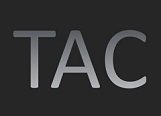EDTECH: SO LITTLE ED FROM SO MUCH TECH
By Steve Bowleer
Everyday I ask my kids "how was school?" and every day I get the same answer times three, "boring."
When we started out with our idea to apply Internet technology to K12 education, the vision that stuck in my head was to have every student needing nothing more than a tablet or small laptop to replace those hefty 40 pound backpacks my kids carried each day. They would be able to get every course, every lesson, their grades and attendance, and calendar events all on one device. All their learning content from almost infinite sources would be repackaged and incorporated on a personal roadmap for each student. Teachers would be able to create this map and monitor progress, get notified of who needs help, and instantly provide remedies that fit the situation. This was in 2004.
We successfully deployed a crude laptop running Linux in a secure environment with a custom Learning Management System (LMS) and partnered with networking companies to provide wireless networks to any schools that didn't have them. Our version 1.0 LMS had lessons, assignments, and file storage with views for students, teachers and parents. We patented how we assembled content and how we would use advertising to fund it. Then we piloted in three school districts. We were on our way to revolutionize K12 learning.
The tablet or laptop which would have been cost prohibitive for school districts to provide to every student in 2004 are now past the inflection point where they can do so. And nearly every school has wireless Internet now. Yet, today, my three youngest children went off to school with 42 pound backpacks. The additional 2 pounds besides the outdated hardcover books are their Chromebooks. So where'd we go wrong?
Digitizing educational content is perhaps the easiest technological problem to solve. In fact, it already is digitized. Nobody produces a text book using a printing press. But a combination of textbook publishers having a hold on schools, and teachers not being properly prepared for change has led to this worst of all hybrid technology models.
I can't think of anything less efficient and more outdated than the idea of carrying a year's worth of printed information for every subject to school each day (plus a band instrument or sports gear if your child is so inclined). Worse yet is they still bring home photocopies of worksheets which have been recopied so many times the misaligned print is running off the page.
As far back as a decade ago we had the technology to provide just-in-time lessons that incorporated the latest thinking from top institutions in mathematics, science, history, social science, art and literature, all digitally. We could use text and email delivery notifications to link to these lessons and tests. We could notify parents the moment a grade is posted, a schedule changes, a child becomes ill, a sports game start or ends, a bus returns from a field trip or game. We had all this by 2006! Better yet, we had the ability to measure individual progress and let students learn at their own pace instead of the one-size-fits-all current approach where half the class gets left behind and the other half is bored to tears.
The only other place I've seen such a lag in technology deployment (and such a wasted huge investment) is the federal government where computer systems in many agencies are generations behind what's available in the private sector. I conclude that education is so intertwined with local, state and federal government and outdated modes of delivery and teacher training that at times it seems hopeless. Nobody cuts funding for education and politicians at every level tout their ability to dump money on the problem. It creates unstoppable inertia in the wrong direction.
In the private sector, we keep trying to solve the problem with newer and better technology from more and more innovators in the EdTech space. That's not the issue. Like the federal government that runs multi-trillion dollar deficits, the issue is willpower and change leadership and overcoming an entrenched bureaucracy. No amount of innovation in Silicon Valley is going to fix that. This is a soft science problem. It needs to be solved with top thinkers who can work with local and state governments to drive home what can be possible with so little expenditure.
In this article in Forbes the author does a great job showing how this problem evolved. We went from one room shoolhouses to groupings by age and grade so we could deliver information in a one-to-many efficient way. It wasn't until the teaching model changed that the technology was utilized effectively.
Now we again need to adjust the delivery method so that every student is taught each subject at their own pace and with the appropriate content to achieve competency. Instead of cutting off a child at the end of a term and school year and grading based on the prescribed time, teach them till they achieve competence in the module and then move them forward. For some kids this could mean graduation in ten years while others may require an extra year or two. Or it could mean some students achieve competence or mastery over a different number of subjects. Online college is much like this but it has the advantage that the students are already employed and fill unused time productively.
The technology we have today can enable individual curricula and content to make sure every kid learns. But the model we're using is holding them back.
Steve Bowler is a Co-Founder of HotChalk, Inc., Inc. an early pioneer in K12 EdTech and an Online Program Manager for Post Secondary Education. He also Co-Founded ProductFactory, Inc., a provider of enterprise Product Portfolio Management that was acquired and a Founder of Venalytica in Consumer Preference Analytics. Steve is an expert in Product Management, Program Management and Agile Development.



